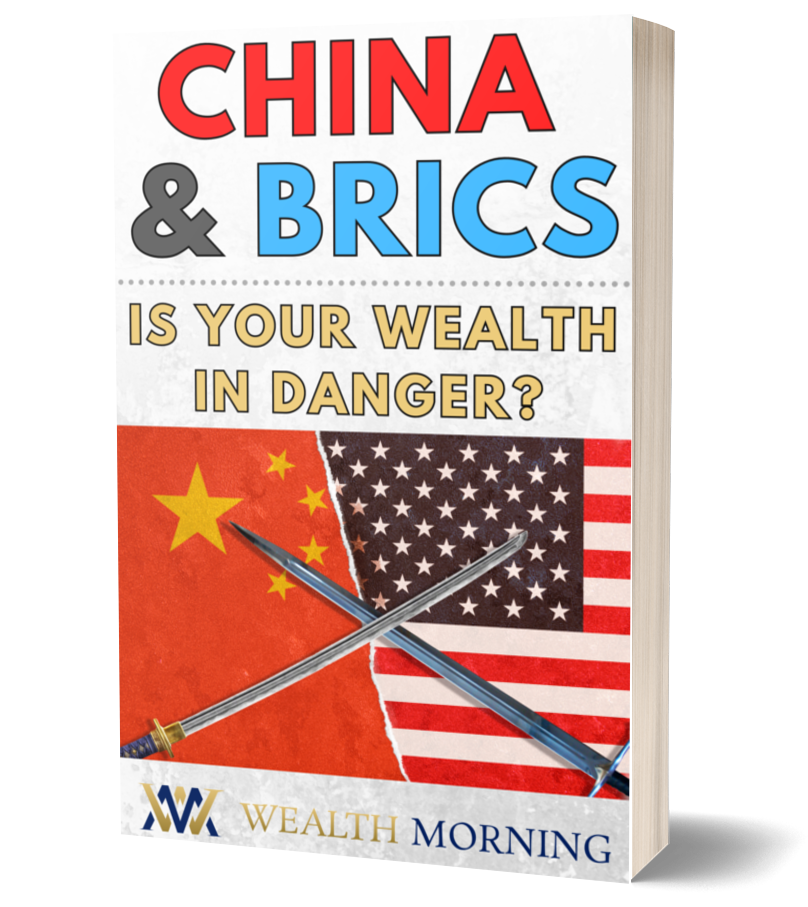A determined government can always create inflation.
—Ben Bernanke
‘Fed Adds $82 Billion to Financial Markets.’ That’s the headline on page B12 of the Wall Street Journal, reporting on the Federal Reserve action.
Previously, the Fed added $60 billion.
This ‘repo madness’ has been going on for four months.
It’s time to ask some questions…
From theoretical to desperate
Who is the biggest debtor in the world? Who is already scheduled to borrow another $20 trillion in the next 20 years?
Who has the biggest bet against the U.S. currency and U.S. government bonds? Who then has the greatest interest in seeing the U.S. dollar…and U.S. bonds…go down? Who would gain as much as $23 trillion if the dollar went the way of the Venezuelan bolívar tomorrow?
And who is in a position to make it happen?
The answers to those questions are all the same: the U.S. government. Nobody stands to make more from inflation and a fall of the dollar and U.S. dollar bonds.
In August of last year, that interest was still mostly theoretical. In September, it became real. Soon, it will be desperate.
Shrimp gumbo debt for Thanksgiving
Yes, Dear Reader, if you let the turkeys decide it, you’ll have shrimp gumbo for Thanksgiving. And these turkeys will make damned sure the dollar goes down.
U.S. debt cannot be repaid. Donald Trump promised to pay it off in eight years. Instead, he’s adding to it at a rate of nearly $100 billion per month. And these deficits can’t be covered by honest borrowing or taxation. That leaves the Fed’s (fake) money printing; it’s the only way out of the debt trap.
Yesterday, ‘investors awaited inflation data for more clues on Fed policy,’ said the news media. They’re wasting their time. The agenda is already set…the strategy is already determined…the Fed’s fate — and ours, too — is sealed.
It’s ‘Inflate or Die.’ There’s no other way. And if there was ever any doubt about it, it was resolved on September 17, 2019.
That’s when liquidity dried up in the ‘repo’ markets — an important corner of the lending markets. The rate to borrow overnight spiked to 10%, and the Fed came to the rescue.
It’s been pumping billions of dollars into the repo market ever since.
Down with the empire
War and inflation have always been reliable ways to bring down an empire. We doubt if they will fail us this time.
The U.S. has been at war for nearly 20 years…with no sign of a let-up. And the Fed has been inflating for decades, but it is now running the printing presses hotter than ever.
Both will follow predictable paths…like a bad marriage…from promising, to tolerable to unbearable. But money is our beat…so let’s focus on inflation.
‘Inflation’ can refer to several things. There’s monetary inflation, in which the feds add to the quantity of money in circulation. There’s asset inflation, in which this additional money drives up stock and bond prices. And there’s consumer price inflation, in which it pushes up household living costs.
Generally, nobody cares about the first; they like the second; and they hate the third. But they all amount to the same thing: ‘printing’ up money and using it to rip someone off.
Like counterfeiting, money printing by the feds is a win-lose operation. Some people come out ahead and some people lose.
As you can figure out from our opening questions, the people who control this counterfeiting operation (the U.S. government) are massively ‘short’ the dollar and U.S. bonds. That is, they are the biggest debtors in the world…with the most to gain from a decrease in the dollar’s value.
They’ve got $23 trillion in debt outstanding, denominated in dollars. Make the dollars worth only half as much, and they get a $11.5 trillion payday. Better yet, get hyperinflation like Weimar Germany in the 1920s, or Venezuela today, and you wipe the slate clean.
People who bought U.S. treasury bonds, or saved dollars for their retirements, are big losers; the feds come out ahead.
Easy, peasy rip-off for debt
How do you make that happen? Easy, peasy.
First, you spend money you don’t have. You lower tax receipts and increase spending. That’s the formula that has given the U.S. regular $1 trillion deficits, as far as the eye can see.
At 4.6% of GDP, the U.S. deficit is already bigger than the deficit-to-GDP of Italy (2.2%) and France (3.1%). Argentina has a larger deficit, 5.4%…but the U.S. is catching up fast.
Second, you ‘monetize’ the deficits. Rather than borrow the money, or raise taxes, you print it. Lots of it.
That, of course, has been the main financial story of the last 10 years. The Fed lent the money at ultra-low rates to the financial industry.
When that wasn’t enough, it printed up extra money — $3.6 trillion — and used it to buy U.S. government bonds. The money got leveraged by Wall Street and turned into a jackpot for everyone who owned stocks and bonds.
In 2009, the value of the stock market alone was about $10 trillion. Now, it’s close to $34 trillion. Investors — or the top 10% of the population — are nearly $20 trillion richer…even as the economy only grew by $7 trillion.
But the story changed on September 17…
Looking death in the face
On that day, the Fed looked death square in the face. Suddenly, the normal lenders — many of them foreigners — were unwilling or unable to cover U.S. deficits.
The Fed had to choose. It could inflate…or it could just let markets do their work.
Luke Gromen, founder of macroeconomic research firm Forest for the Trees, writes:
The US government’s gross UST [treasury bond] issuance in fiscal 2019 was $11.5 trillion, with 71% of that issued at 6 months or less.
The US government is effectively funding itself in short term funding markets, so if the Fed ‘just let markets work’, repo [interest rates in overnight lending markets] would go back to 10% and the US government would need to roll [refinance] ~$6 trillion in the next 6 months, at 10%+.
The US government cannot afford to [refinance] ~$6T at 10%+, especially since at 10%+, the highly-financialized US economy would collapse.
Mortgages would be 12%+, so housing would collapse. The banking system would likely quickly follow. Corporate debt issuance would grind to a halt — they can’t afford to roll [refinance debt] at 10%+.
Record US corporate debt issuance would begin defaulting…which with corporate leverage as high as it is, that could easily wipe out the majority of the equity market cap of the U.S. and the world. [emphasis added]
Do you see, Dear Reader? There was never really any choice. Inflation or death? The turkeys made the only choice they could. Most people thought it was the right choice.
And tomorrow…we’ll see how — when you get into the debt trap — making the ‘right’ choice leads to disaster.
Regards,
Bill Bonner





Since founding Agora Inc. in 1979, Bill Bonner has found success and garnered camaraderie in numerous communities and industries. A man of many talents, his entrepreneurial savvy, unique writings, philanthropic undertakings, and preservationist activities have all been recognized and awarded by some of America’s most respected authorities. Along with Addison Wiggin, his friend and colleague, Bill has written two New York Times best-selling books, Financial Reckoning Day and Empire of Debt. Both works have been critically acclaimed internationally. With political journalist Lila Rajiva, he wrote his third New York Times best-selling book, Mobs, Messiahs and Markets, which offers concrete advice on how to avoid the public spectacle of modern finance.